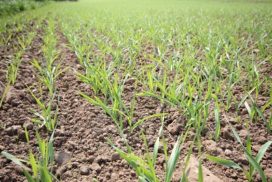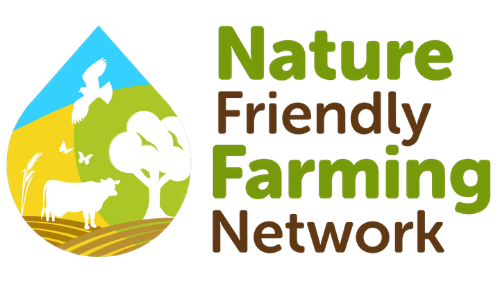Adapting to Climate Change - Crop & Soil Management
The effects of climate change on crops and soils have been increasing over the past century.
This page will split the impacts of climate change into four categories:
- Heavy rainfall and flooding
- Increasing temperatures and drought
- High winds and increased storminess
- Extreme cold weather and snowfall
The effects these have on the sector will be explored and a range of potential adaptation options will be outlined. For more detailed information on these impacts and mitigation techniques see the further information section at the bottom of the page.
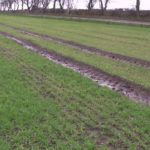 Heavy rainfall and flooding are causing a range of issues that affect crops and soils. Unstable banks and soil are at a high risk of being eroded by flood waters and heavy rainfall. Waterlogged soil and field submersion increase the risk of soil compaction and can result in compromised soil structure. This can lead to issues such as soil erosion, nutrient loss and diffuse pollution. Prolonged field submersion or waterlogging can also create anaerobic conditions that can damage crop roots.
Heavy rainfall and flooding are causing a range of issues that affect crops and soils. Unstable banks and soil are at a high risk of being eroded by flood waters and heavy rainfall. Waterlogged soil and field submersion increase the risk of soil compaction and can result in compromised soil structure. This can lead to issues such as soil erosion, nutrient loss and diffuse pollution. Prolonged field submersion or waterlogging can also create anaerobic conditions that can damage crop roots.
Adaptation option examples | |
| Sustainable Drainage systems (SuDS) | SuDS can be used to transport surface water, slow surface runoff and provide storage areas. |
| Natural Flood Management (NFM) | Improving NFM such as restoring peatland, plant woodland and riparian vegetation can increase water storage and slow water in your catchment. Some of the benefits of NFM include reduced river flow rates, downstream flooding and catchment erosion. |
| Introduce new technology | Introducing new technologies to reduce the effects of climate change are key adaptation techniques. Using the most suitable tyres at the correct pressure on heavy machinery to reduce compaction is one example; this may mean changing tyres during the season. |
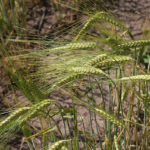 Increases in temperatures and cases of drought are threatening water storage and supply. This can increase the risk of water and heat stress within the crop as well as causing more wildfires. In some parts of the country warmer summers are increasing growing seasons, increasing productivity and crop yields.
Increases in temperatures and cases of drought are threatening water storage and supply. This can increase the risk of water and heat stress within the crop as well as causing more wildfires. In some parts of the country warmer summers are increasing growing seasons, increasing productivity and crop yields.
Adaptation option examples | |
| Irrigation systems | Having the option to irrigate high value crops can ensure yields do not suffer during dry periods. Be careful not to over abstract, having a backup water source to support this system should be considered. |
| Back up water source | Having capacity to store water on farm using systems such as off-stream reservoirs and rainwater harvesting systems will reduce the pressure when water is in short supply. |
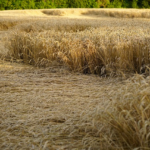 Increased cases of high winds and storminess are threatening crop systems and soil health. High winds and heavy rainfall can damage crops, affecting growth, yields and increasing the risk of pest and disease cases. Areas of open or unstable soil can also be eroded by high winds and heavy rain, removing valuable soil from the land.
Increased cases of high winds and storminess are threatening crop systems and soil health. High winds and heavy rainfall can damage crops, affecting growth, yields and increasing the risk of pest and disease cases. Areas of open or unstable soil can also be eroded by high winds and heavy rain, removing valuable soil from the land.
Adaptation option examples | |
| Shelter belts | Creating shelterbelts can provide shelter against high winds for crops and provide shelter and shade for livestock. Trees planted will store carbon and become a habitat for a range of flora and fauna. Other benefits include increased water infiltration and soil nutrient cycling. |
| Cover crops | Hedgerows can provide shelter against prevailing winds as well as slow surface runoff from water erosion. Litter leaf can help to improve soil structure helping to retain soil moisture. |
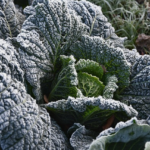 While projections are for winters to become milder and wetter, the intensity of these events when they do occur is expected to be greater and sporadic. Sudden drops in temperature may damage young crops or those suited for warmer conditions and repeat freezing of crops can cause significant damage to due to the expansion of plant cells during the freezing process. Sub-zero temperatures may also burst irrigation system pipes, and the wet and cold conditions associated with snowfall may reduce soil health though soil compaction.
While projections are for winters to become milder and wetter, the intensity of these events when they do occur is expected to be greater and sporadic. Sudden drops in temperature may damage young crops or those suited for warmer conditions and repeat freezing of crops can cause significant damage to due to the expansion of plant cells during the freezing process. Sub-zero temperatures may also burst irrigation system pipes, and the wet and cold conditions associated with snowfall may reduce soil health though soil compaction.
Adaptation option examples | |
| Cover crops | Cover crops help protect soil and water quality. Selecting a hardy winter crop will ensure the most protection against colder conditions. Cover crop are also good at preventing soil erosion from heavy rainfall and can increase soil quality by using such nutrient fixing plants. |
| Drain irrigation system during winter months | Removing water from the system will stop pipe bursts in sub-zero conditions, increasing the longevity of your system, saving you time and money in the long run. |
Further Information
Sign up to the FAS newsletter
Receive updates on news, events and publications from Scotland’s Farm Advisory Service

